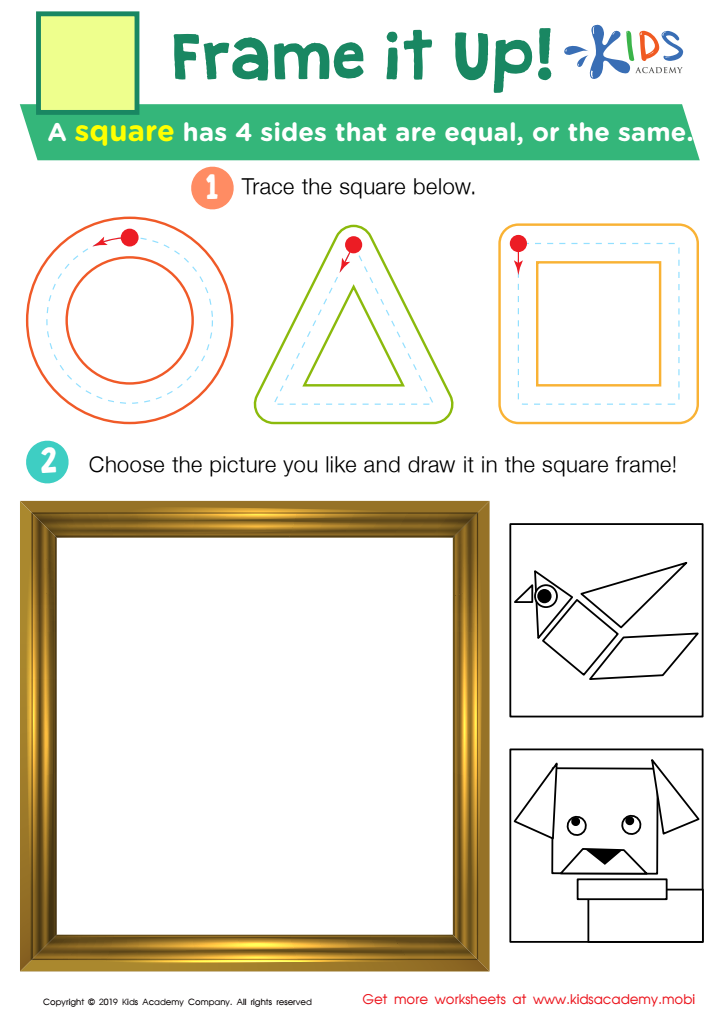Understanding frames Worksheets for Kids
1 filtered results
-
From - To


Frame it Up Worksheet
Question/Answer
What are some effective activities to train students’ Understanding frames skill when teaching them about Geometry?
Effective activities for training students in understanding frames in Geometry include hands-on manipulatives (like tangrams and Geoboards), drawing and labeling geometric figures, using grid paper for practicing scale and proportion, interactive digital tools (such as GeoGebra), and real-life framing projects (like creating a picture frame or mapping out a simple garden plot) to apply concepts of perimeter and area.
Why is the Understanding frames skill important for Preschool students?
The Understanding frames skill is important for preschool students because it lays the foundation for mathematical thinking, spatial awareness, and logical reasoning. It helps them grasp the concept of boundaries, organize information effectively, and understand the structure of objects and space.
How to train the Understanding frames skill in Preschool students learning about Geometry?
To train the "Understanding frames" skill in preschool students learning about Geometry, incorporate activities that involve identifying, creating, and discussing shapes and their outlines. Use manipulatives like blocks and puzzles, encourage drawing and tracing shapes, and play games that require recognizing and naming shapes.
 Assign to the classroom
Assign to the classroom











